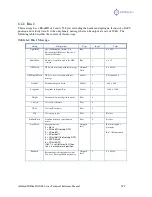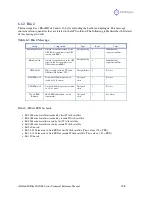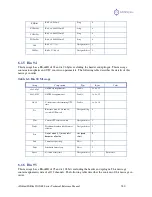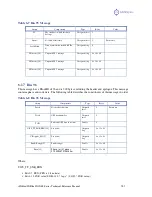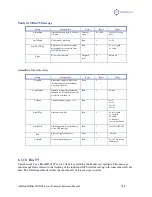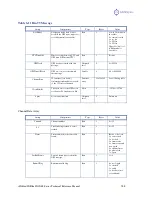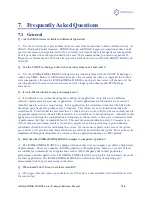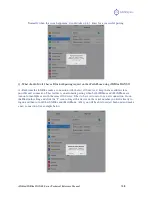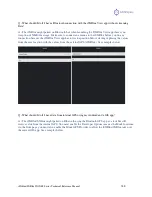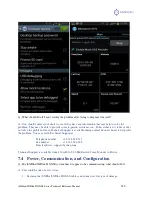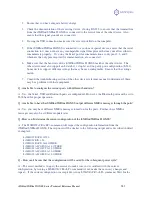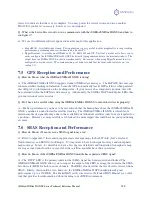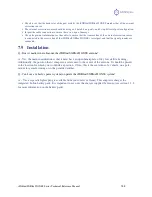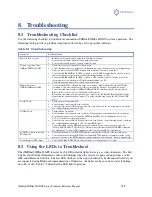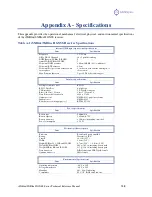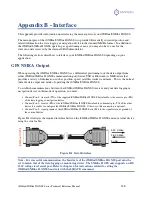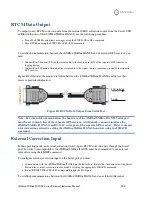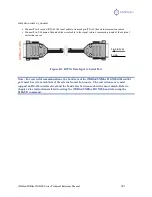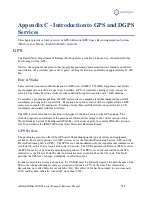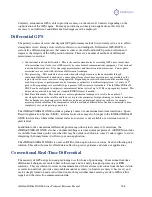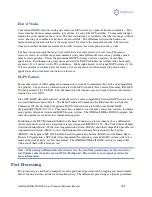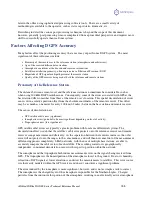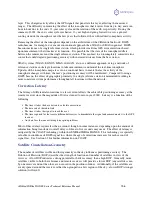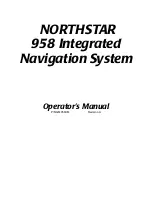
iSXblue/SXBlue II GNSS Series Technical Reference Manual
141
2.
Ensure that you have adequate battery charge.
3.
Check the documentation of the receiving device, if using RS-232, to ensure that the transmit line
from the iSXBlue/SXBlue II GNSS is connected to the receive line of the other device. Also
ensure that the signal grounds are connected.
4.
If using the USB connection, make sure drivers are installed on the computer.
5.
If the iSXBlue/SXBlue II GNSS is connected to a custom or special device, ensure that the serial
connection to it does not have any incompatible signal lines present that may not allow either to
communicate properly. Try using the Serial port for communication as only pins 2, 3, and 5,
which are the only pins required for communication, are connected.
6.
Make sure that the baud rate of the iSXBlue/SXBlue II GNSS matches the other device. The
other device must also support an 8 data bit, 1 stop bit, and no parity port configuration (8-N-1).
Some devices support different settings that may be user-configurable. Ensure that the settings
match.
7.
Consult the troubleshooting section of the other devices reference manual to determine if there
may be a problem with that equipment.
Q - Am I able to configure the various ports with different baud rates?
A - Yes, the Serial, USB and Bluetooth ports are independent. However, the Bluetooth port must be set to
9600 baud for proper operation.
Q - Am I able to have the iSXBlue/SXBlue II GNSS output different NMEA messages through the ports?
A - Yes, you may have different NMEA messages turned on for the ports. Further, these NMEA
messages may also be at different update rates.
Q - How can I determine the current configuration of the iSXBlue/SXBlue II GNSS?
A - The $JSHOW<CR><LF> command will request the configuration information from the
iSXBlue/SXBlue II GNSS. The response will be similar to the following output and is described in detail
in chapter 4.
$>JSHOW,BAUD,19200
$>JSHOW,BIN,1,5.0
$>JSHOW,BAUD,9600,OTHER
$>JSHOW,ASC,GPGGA,1.0,OTHER
$>JSHOW,ASC,GPVTG,1.0,OTHER
$>JSHOW,ASC,GPGSA,1.0,OTHER
$>JSHOW,ASC,GPZDA,1.0,OTHER
Q – How can I be sure that the configuration will be saved for the subsequent power cycle?
A – The surest method is to query the receiver to make sure you’re satisfied with the current
configuration, by issuing a $JSHOW<CR><LF> command (if not, make the necessary changes and
repeat). If the current configuration is acceptable, issue a $JSAVE<CR><LF> command. Wait for the

